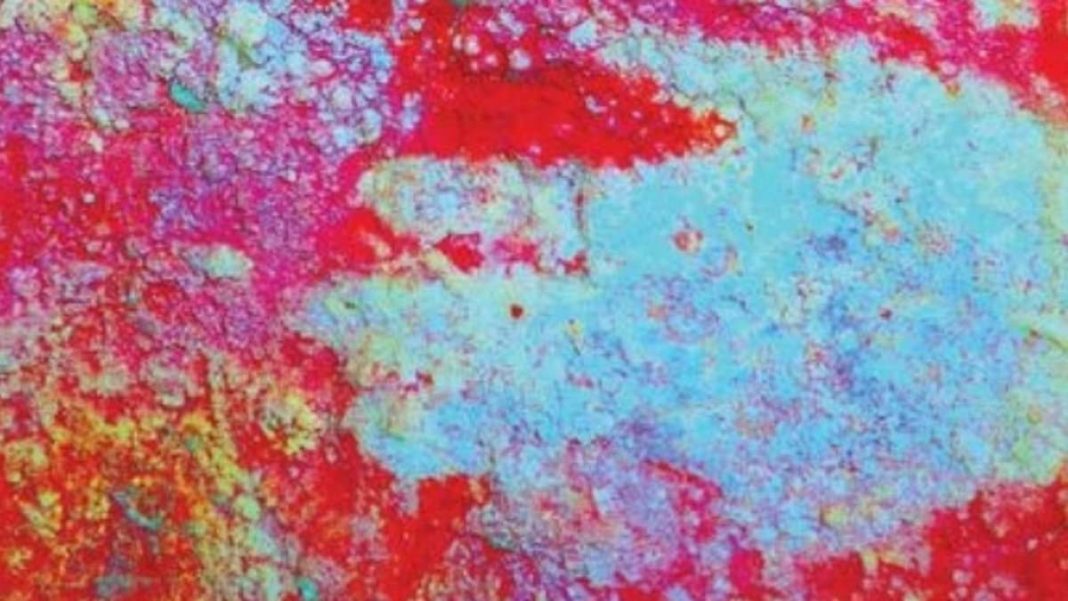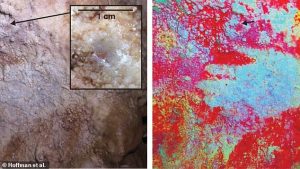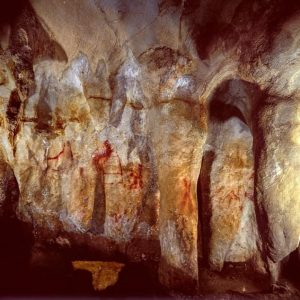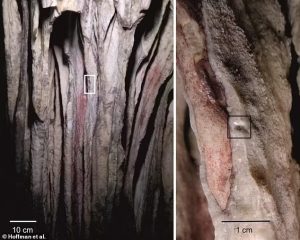Key Takeaways
- Neanderthals created cave art over 64,000 years ago, predating modern humans in Europe by at least 22,000 years
- Discovery includes hand stencils, geometric patterns, and intentional markings in Spanish and French caves
- Findings challenge the long-held belief that symbolic thought was exclusive to Homo sapiens
Groundbreaking cave art discoveries in Europe are forcing scientists to completely rethink human origins. New evidence reveals Neanderthals were creating symbolic art thousands of years before modern humans arrived on the continent.
Ancient Artistic Evidence
Researchers have identified sophisticated cave art in three Spanish caves dating back more than 64,000 years. The artworks include hand stencils made by blowing pigment over hands, geometric signs, color washes, and linear motifs pressed into soft cave surfaces.
These creations predate the earliest known Homo sapiens cave art by at least 22,000 years, confirming Neanderthals as the original European artists.
Sophisticated Cave Constructions
At La Roche Cotard in France, archaeologists found additional evidence of Neanderthal creativity. The site features organized finger flutings showing wavy, parallel and curved lines demonstrating intentional patterns.
Even more remarkably, Neanderthals broke stalactites into equal sections and built a large oval structure topped with small fires. This represents an early form of installation art far beyond practical needs.
Scientific Dating Methods
Dating cave art presents significant challenges, but researchers used uranium-thorium methods on flowstones covering the pigments to establish minimum ages.
Paul Pettitt, professor at Durham University, explained: “I was part of a team who used this method to date flowstones overlying red pigment art in the three Spanish caves mentioned earlier, demonstrating that hand stencils, dots and color washes must have been created over 64,000 years ago. This is a minimum age: the actual age of the images could be much older.”
Three Significant Cave Sites
The Spanish caves provide compelling evidence across different artistic expressions:
- La Pasiega: Contained a ‘ladder’ motif of horizontal and vertical lines
- Maltravieso: Featured dozens of red ochre hand stencils created by blowing pigment
- Ardales: Showed a mix of linear signs, geometric shapes, and handprints demonstrating deliberate design
Rewriting Human History
These findings have major implications for understanding human evolution. They demonstrate that cognitive abilities for symbolic art, abstract thinking, and planning were present in Neanderthals as well as modern humans.
The discoveries challenge the traditional “cultural explosion” narrative of the Upper Paleolithic that credited modern humans alone with sophisticated symbolic behavior.
While all known Neanderthal cave art is non-figurative (lacking animal or human depictions), the deliberate markings show intentional artistic practice with clear planning and design sense.
Experts believe these discoveries represent just the beginning, as ongoing research in deep caves using advanced dating methods will likely uncover more examples of Neanderthal artistic activity, further transforming our understanding of our ancient cousins.







